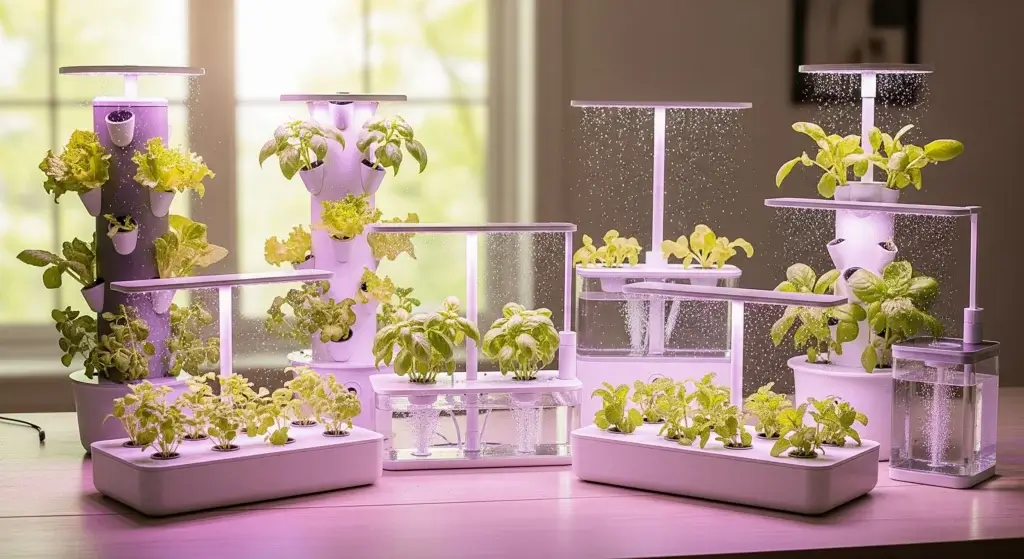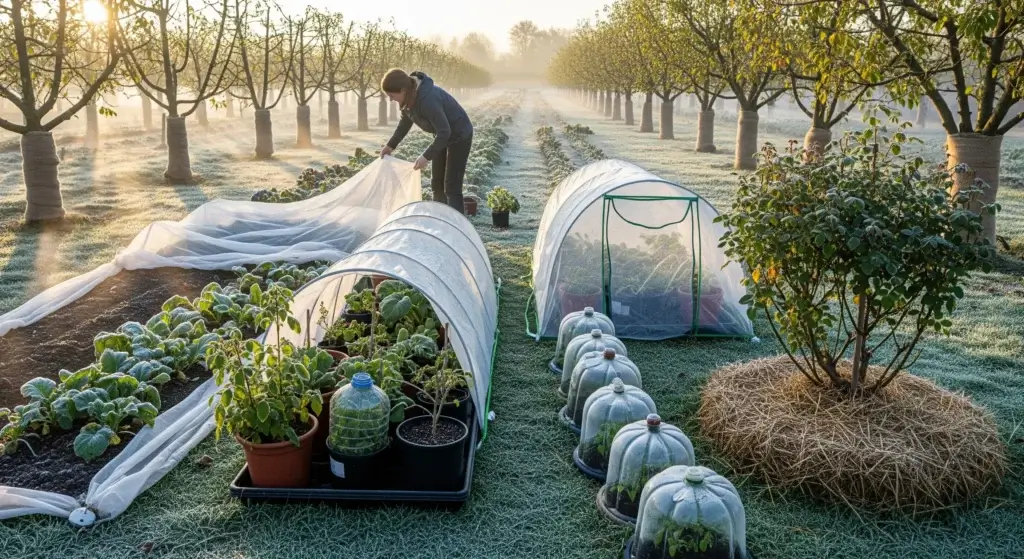When most people think of radishes, they picture the small, round, red ones chilling in the supermarket like they’re the only members of the squad. However, the radish family is way more chaotic and diverse than that. There are tons of varieties—different sizes, wild colors, bold flavors—that can completely level-up your cooking and even make your garden feel like it has lore. Once you meet the full radish lineup, you’ll wonder why you ever settled for the basic ones.

Spring and Summer Radishes
Cherry Belle Radishes
Cherry Belles are the classic “starter pack” radishes you’ve seen a million times—small, round, red, and crunchier than a fresh bag of chips. They grow ridiculously fast, like “you blink and they’re done” fast. Their flavor is gently peppery, kind of like they’re trying to spice things up without terrifying you. Eat them raw, slice them into everything, or just snack straight from the garden. Just don’t leave them roasting in summer heat too long, or they’ll turn spicy and sad.
French Breakfast Radishes
These long, red-to-white radishes look like tiny veggie popsicles and taste gentler than the Cherry Belles. The white tips are extra mellow, like the radish equivalent of a chill friend. In France, people literally eat them with butter and salt, which sounds weird until you try it and suddenly feel fancy for no reason.
- Read Also: The Green Wall: A Guide to Different Types of Privet Hedges
- Read Also: Different Lettuce Types: Everything You Need to Know
Easter Egg Radishes
Easter Eggs are the mystery box of the radish world. You pull them up and boom—red, purple, pink, white—you never know what you’re gonna get. They’re mild, cute, and fast to grow, which makes them a total win for beginners, kids, or anyone who loves surprises that aren’t student-loan-related.
Watermelon Radishes
These are the glow-up queens of radishes. They look plain on the outside but slice them open and they’re neon pink like they’re trying to go viral on Instagram. They’re bigger, sweeter, and way more mellow than regular radishes. Chefs love them for the drama factor alone. Bonus: their crazy color comes from antioxidants—the same stuff in berries—so they’re basically beauty and brains packed into one root.
Winter Radishes
Daikon Radishes
Daikon is the giant of the radish world—like, “could be used as a sword in an anime” giant. These long white roots show up in tons of Asian dishes because they’re super chill in flavor: crisp, mild, slightly sweet, and way less dramatic than spring radishes. Raw, they’re refreshing; cooked, they turn soft and cozy, almost turnip-like. They star in Korean dishes like kkakdugi and dongchimi, and they’re packed with vitamin C and other good stuff your body actually appreciates.
Black Spanish Radishes
These radishes look like they’re going through a goth phase—rough black skin outside, glowing white inside. They’re old-school European veggies and come with a punchy, peppery bite that can shock unprepared taste buds. Raw, they’re intense but kinda fun; cooked, they mellow out and behave themselves. They also store forever, which made them the MVP winter veggie back before fridges existed.
Korean Radishes (Mu)
Mu radishes are daikon’s shorter, chunkier cousins—like the gym bro version—but sweeter and juicier. They’ve got a little green fade at the top and a crispy texture that somehow survives even fermentation. That’s why they’re the go-to for real Korean kimchi. Whether raw, cooked, or buried in a spicy kimchi jar, they keep their crunch like it’s their whole personality.
Specialty and Heirloom Varieties
Rat-Tail Radishes
Rat-tail radishes flip the script — people grow them for the long, crunchy seedpods instead of the root. The pods are crunchy and peppery but way more chill than a raw radish root, so you can eat them fresh, pickle them, or toss them in a stir-fry for a cool texture twist. Popular in Southeast Asia and a favorite for chefs and gardeners who like weird, tasty stuff.
Miyashige Radishes
Miyashige are the pretty ones: white inside, purple-red skin, about 4–6 inches long. They’re mild and slightly sweet, perfect for pickling or fancy cuts that make your salad look like it did a glow-up.
Plum Purple Radishes
These little round radishes pop with deep purple skin and white flesh — visually dramatic and lightly spicy with a hint of sweetness. They grow fast (like 25–30 days) and owe their color to anthocyanins, the same plant pigments that show up in berries and might be good for your heart.
Nutritional Benefits Across Varieties
Radishes are basically the undercover heroes of the veggie world. They’re super low-cal — a whole cup is only around 19 calories — but they pack in vitamin C, folate, and potassium like they’re trying to win a nutrition contest. Their signature spicy vibe comes from glucosinolates, special compounds that your body turns into tiny detox ninjas that may help protect your cells. Even the fiber, modest as it is, helps keep your stomach happy and makes you feel full without feeling like you swallowed a brick.
Different radishes bring different perks. The ones with intense colors usually have more antioxidants (the same stuff that keeps berries famous). Big winter radishes like daikon tend to have more fiber just because they’re built like tanks, while spring varieties deliver nutrients in small, snackable bites.
Growing Different Radish Varieties
Growing radishes is kind of like understanding friend groups — everyone has their own vibe. Spring radishes love cool weather and will absolutely freak out if you try to grow them in heat. You can plant them as soon as the soil isn’t frozen solid, and they’re happiest when temperatures stay between 50 and 65°F. If they get too hot, they turn woody and spicy in a “I warned you” type of way.
Winter radishes take longer, usually 50 to 70 days, but they’re the chill ones who don’t mind cold weather. Plant them in late summer, let fall temperatures drop, and they reward you with amazing texture and flavor.
No matter the type, radishes want soil that’s soft and drama-free. Rocks and clumps can make their roots grow all twisted, like a potato having an identity crisis. Add compost to keep things loose and nutritious, but don’t overdo the fertilizer — too much nitrogen makes lots of leaves and sad, tiny roots.
Give them space so they’re not fighting their neighbors: one to two inches for spring radishes, four to six for winter ones. And keep the soil evenly moist. If you water them like a chaotic student with deadlines — all at once, then ignore them — you’ll end up with cracked or split radishes that look like they’ve been through something.
- Read Also: Different Types of Spinach You Should Grow in Your Garden
- Read Also: Exploring the Different Carrot Plant Varieties Around the World
Conclusion
Radishes aren’t just those boring red disks at the store — they’re a whole squad: speedy spring types, dramatic show-offs like watermelon radishes, winter heavyweights like daikon, and weirdos like rat-tail. Each one brings different flavors, looks, and growing vibes, so choosing the right kind for your garden and kitchen actually matters. Try a few and it’s like unlocking a secret level in cooking — surprising colors, crunchy textures, and legit nutrition. Plant some, taste the glow-up, and never call a radish “just a garnish” again.



